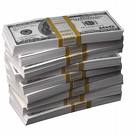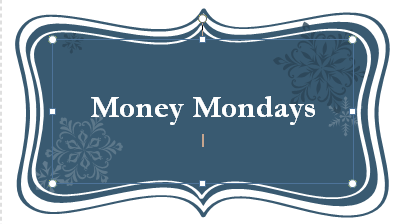I am always talking about how to save money so I thought I would talk about my Emergency Fund here for a little bit. You hear personal finance bloggers talking about the Emergency Fund all the time and in some cases it sounds very complicated.
In reality it is really easy to set up and maintain an Emergency Fund and once you get it started it requires very little effort on your part.
How Much Money to Save
The first thing you need to do when setting up your Emergency Fund is to decide how much you want to keep in it. You can use different methods to calculate the optimal amount required for you, whether that be three months of living expenses, six months of income or a set amount.
I decided to have my Emergency Fund be a set dollar figure instead of trying to mess with the complicated calculations. Generally people have decided on $1000 as a reasonable figure for an Emergency Fund if you are just going to pick a number. I hope that I do not have an emergency that is going to cost that much but that is a target for me right now.
Where to Save Money
I decided to save my money using ING because it was simply one of the best online savings accounts I could find. They offered well over 3% interest at the time I started my Emergency Fund so earning that interest on the money I had in my savings account was a plus for me.
There are many other places you could store your Emergency Fund but just make sure that it is somewhere that you can get to it quickly if you need to, as well as being in an interest bearing account.
When To Save Money
The next step you need to take is to decide when to save your money. By this I mean that you need to decide how often you are going to send money to your Emergency Fund in order to make your money grow.
 You can decide to send in money every month, every week or every paycheck if you do not get paid a regular salary. You can also snowflake a few irregular payments to the savings account and that will help it to grow even faster!!!
You can decide to send in money every month, every week or every paycheck if you do not get paid a regular salary. You can also snowflake a few irregular payments to the savings account and that will help it to grow even faster!!!
In my case I am sending money to the Emergency Fund at ING every month because that schedule works for me.
Save Money Automatically
In order to have the best possible experience with your Emergency Fund you make the money saving process automatic. You need to have the money taken out of your other account and sent into the Emergency Fund through some type of FREE automatic transfer so that you never have to bother with it.
Again, ING makes this easy for you since there is no fee for the transfers. If you use another ING account to make the transfers from then the money is available on the day of the transfer so you do not even have to wait a few days for the money to clear.
Forget Your Money
The final step in making your Emergency Fund work for you is to forget it . That’s right, I said you need to forget the Emergency Fund once you have everything set up correctly. You do not need to spend time thinking about the Emergency Fund because it is not a Daily Fund . It is something that you should only be concerned about in times of an actual emergency so just ignore it for the most part.
Of course you will want to check on your Emergency Fund at least once a month just to make sure all of the deposits are being made and also to check on how much interest you are getting since we all know how much interest rates can fluctuate.
Now that you are all set all you have to do is watch the money in your Emergency Fund grow as you send in more deposits and also earn interest on the balance. Do you have an Emergency Fund? How did you set it up? I would love to hear from you.





Before starting that fund, I’d ask – do you have any credit card debt? Your savings can ‘earn’ you up to 24%/yr by using that money to pay down the credit card debt. For most, it makes little sense to have $1000 sitting at 3% and $4000 owed at 24%.
Just a thought.
Joe
I do have credit card debt that I am paying off while i am building my fund. I currently send $5 a month to the fund. In my case the mentality of saving is good for me right now.
The emergency fund strategy I spoke about can be applied by someone who does not have debt since it was meant to illustrate how easy it is to get your fund going.
Thanks for dropping by and please come back again.
At this moment, I am keeping $1000 in my checking account at all times, that is my buffer. I then automatically put about 50% of my paycheck into a savings account that provides 3% interest. I just paid off my student loans, so saving is number one on my list.
Good for you that you knocked out the student loan AND you are saving in a high interest account.
Feels good to have that savings doesn’t it?
Even though the it is true that Emergency fund information is all over the internet and TV these days, I think it is important to keep talking about it. I’m sure there are still tons of people out there who don’t have an emergency fund, so kudos for continuing to talk about it.
My only concern would be that you mention having a $1,000 emergency fund. How long could afford to live on $1,000?
@ Ralph:
$1000 would only last me about one month if I had to LIVE on it. The reason I am aiming for such a low figure right now is that I am paying off credit card debt and it does not make sense to have a large amount of money gaining less interest than what I am being charged on my debt.
When I get rid of all the credit card debt then I will have a bigger fund set up.
I really only think about my emergency fund when there is an acutal emergency. It’s not readily accessible…I would need to click a few buttons…but it’s there when I hit panic mode 🙂
I agree with Joetaxpayer. An emergency fund is essential, but paying of credit card effectively creates cash flow for you, and that extra money you have can then be saved.
Great post on the emergency fund.
I started following Dave Ramsey’s Total Money Makeover plan earlier this year, and Baby Step 1 is to create a $1000 emergency fund as fast as possible. I put pretty much everything on hold and generated this in about a month. It is comforting to know I have that money there in case something unexpected happens, it won’t wreck my monthly budget and leave me broke and feeling bad.
JoeTaxpayer and Flimjo – The point of the emergency fund isn’t to make money off interest, so paying that on a credit card instead is not a good idea. It is a rainy day fund, so when something unexpected does happen (and it will), you won’t have to go charge that expense to a credit card and thus, feel like you aren’t making any traction with your get-out-of-debt goal.
I agree with LuLuGal, everyone should have an emergency fund, regardless if you have credit card debt or not.
Ralph – If you follow Ramsey, the $1000 is just your initial, baby emergency fund. Once you are out of debt (except the house), you should then stock your emergency fund to 3-6 months worth of expenses. This will of course vary for everyone, but it’s a good general number.
Hey Shawn thanks for clarifying the reason for having the emergency fund.
I think most people do not realize that they need to form the habit of saving….even if is just $1 a month. That is what I started with, even while I was paying off my credit cards.
Just having the mentality helps so that you know you can control what your money does.
This post has been included in the 5th Carnival of Snowflaking, going live May 22nd at My Small Cents.
Honestly, an emergency fund is useless if one carries a high credit card balance because it’s highly unlikely, that you’ll be able to keep those CC balances at the introductory (or balance transfer) interest rates for the long haul. So, all and all, that extra saved cash will be losing interest, to paying off the bigger CC loan.
The best thing to do, if you have CC debt, is to insure that you have enough additional credit to carry you, between jobs, if there’s a layoff. So in fact, pay off the balances and then, shore up a cash-only emergency fund.
Also, if you’re a trader (of some sorts), don’t make your gold, commodities, or forex accounts a type of emergency fund. Those are specifically growth funds designed to earn you an income stream, during good or bad times. Emergency funds are highly liquid, cash-only intermediates, which can be from a multi-currency CD, however, do realize that you’re treating this pool as an invest but as a hedge against job losses and major emergencies.
In my earlier days as a student, when I was still blind about finances, all I did was to save money in an emergency fund. Just savings in a simple savings account. I continuously did this for a couple of years and completely forgot about this sum of money after some time.
Though it was not really used as an emergency fund, when I was looking out for down payment to purchase my apartment, this stashed away cash came in real handy!
t-luck’s last blog post..Painless Way to Clear Your Debts